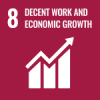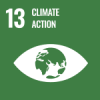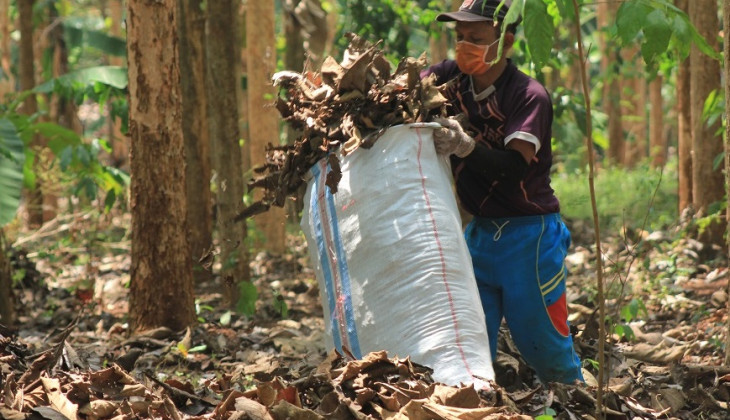The research team from UGM Faculty of Veterinary Medicine (FKH) utilized teak leaf waste to be used as cattle feed. It was aimed to overcome problems faced by cattle breeders in the Gunungkidul area who have difficulty finding animal feed during the dry season. This is because some breeders buy forage feed from outside Gunungkidul to meet their daily feed needs. “The area of Gunungkidul has a lot of teak forests, the teak leaves there are quite abundant, but not yet used, so we look at the resources that are there for their livestock,” said Dr. Drh. Sarmin, a researcher from FKH UGM, when being met at the UGM campus, on Thursday (2/1).
Before using fermented teak leaf feed, farmers in Gunungkidul previously bought kolonjono grass or branches and leaves of corn plants from outside the region. For breeders who have 2-3 cows or goats, they need at least 4-5 bunches of grass. “They also have to spend a pretty good amount of money on their cows,” he said.
The manufacture of fermented feed from dry teak leaves, according to Sarmin, is to encourage farmers to utilize feed resources from their surrounding environment. However, breeders are also taught and trained to process teak leaf waste as silage feed for their livestock. Because so far, the teak leaves have only been burned or left to dry. “We teach them to make feed fermentation so that during the dry season they have a supply of feed,” he said.
To make this fermented feed, said Sarmin, the dried teak leaf waste is collected in a large drum. Then, the dried teak leaves is mixed with the concentrate. In order for the fermentation process to occur, the teak leaf material is given EM4 liquid, a type of liquid that contains rotting bacteria. Apart from EM4, this fermented feed ingredient is also given sugar cane extract or molasses. “We mix all the ingredients well and allow them to ferment for 21 days until a fragrant aroma appears with a soft feed texture,” he said.
According to Sarmin, apart from teak leaf waste, the UGM FKH team also provided assistance to utilize animal feed sources from banana gedebog or banana tree trunks and hay using the same method. “We have tried other materials that are cheap and readily available, such as gedebog and hay,” he explained.
The use of fermented feed made from teak leaves, banana tree trunks and straw has been implemented in Kemiri Village, Tanjungsari, Gunungkidul, Yogyakarta through the Appropriate Technology Dissemination program. Last Saturday, 28 December 2019, he and other researchers, such as Dr. drh. Soedarmanto Indarjulianto, and Dr. drh. Irkham Widiyono handed over a lawn chopper, oil slicer and cassava cutter for cassava craftsmen.
Soedarminto Indarjulianto, another member of the UGM Faculty of Veterinary Medicine researchers, said that by providing the lawn chopper, it is hoped that farmers can provide a source of milled feed from previously hard materials such as corn canes and elephant grass stalks. “We hope that the source of feed and the process of livestock digestion will be higher and livestock productivity will increase,” he said.
Wasidi (60), a member of the farmer group from the Ngudi Rejeki Farmers Group from Kemiri Village, Gunungkidul, said that in the dry season he buys feed from corn plants at least every day to meet his animal feed needs. “Every day I buy up to six bunches, each of which contains 7 sticks for five thousand per bunch,” he said.
According to him, almost the residents of Kemiri Village have livestock in the form of cows, sheep and goats. He himself raises three goats from the assistance from UGM FKH. In the dry season, he said, residents have difficulty getting supplies of livestock feed, so they have to buy through agents. “The feed comes from Klaten,” he said.
The training program for making fermented feed carried out by the UGM FKH is very helpful for breeders in Kemiri Village. In addition, they are also taught to make mineral block feed as a source of mineral nutrition for their livestock. “We are taught to make mineral blocks and have their livestock checked for health, most of which are infected with worms and ticks,” he said.
Source: https://ugm.ac.id/id/berita/18906-tim-peneliti-ugm-manfaatkan-limbah-daun-jati-untuk-pakan-ternak



